We say all the time how pianos last a “lifetime”. But how long is that actually? And just how long do pianos last really?
Of course, the most accurate answer to how long a piano will last is “it depends.” But a general useful answer would be slightly longer than the average human lifespan: around 90 years.
With over 12,000 individual parts—many of which are made of organic materials that must be kept in precise alignment—it’s fascinating that the useful lives of pianos is this long!
In an age where your smartphone (and most everything else) is made to be replaced every few years, pianos are true relics of the “built to last” mindset modernity gave up on some time ago. They’re engineering marvels; easily the most complex non-electronic machines that most people will interact with.
Gushing aside, let’s dive a little deeper and get into a few concepts you should know as a piano owner. If you’re interested in knowing how long pianos can last, it’s important to know how these instrument age.
Understanding the “Mileage” of a Piano
Just like with cars, the age, initial quality, level of maintenance received and its “mileage” (amount of actual play received during its life) are the most important variables impacting the aging process on a piano.
One common explanation we use is that 10 years on a piano is like 1.5 to 2 years on a used car. Under this analogy, purchasing a 40-year-old used piano is akin to purchasing a six- to eight-year-old car.
Now a piano’s “mileage” is often the most important variable in the wear a piano, though it’s much tricker to qualify — and pianos don’t come with odometers!
And even if pianos did have some sort of odometer to measure playing time, even the total hours/notes played still wouldn’t tell the full story of a piano’s mileage either.
Advanced Playing Wears Pianos Down Quicker
Playing piano is complicated. The amount of wear resulting from an hour of playing is drastically impacted by factors like the intensity of the music played, the style of music played, and even the individual technique of the pianist.
For example, a concert pianist ripping through a virtuosic piano concerto will incur much more wear on a piano in an hour than a beginner student would in the same time.

Just like redlining an engine will wear down the car if done constantly, Elton John like performances will wear the piano more than playing Chopsticks will!
One hour of advanced playing in a smooth, lyrical style will put less wear on a piano than one hour of an equally advanced but punchy, percussive, and highly dynamic playing style.
A high-level concert pianist will wear their piano down many times faster than would a piano seeing typical home use (which I’ll loosely define as 30 minutes to 2 hours a day of low to medium intensity playing, though many pianos receive much less).
All this said, advanced pianists are also much more likely have their pianos maintained to much higher standards than a typical household. Practice-room pianos in high-level conservatories can easily receive more than 12 hours of advanced playing a day, enough to significantly wear them down within ten to twenty years!
How to Identify Wear on Pianos
Though I’ve established the difficulty of estimating the numeric “mileage” on a piano, the effects of wear on a piano can be both felt and seen if you know how to look for it.
Of course, the best way to know for sure just how worn a piano is would be to have the piano evaluated by an experienced piano technician. This is highly recommended for major purchases of used pianos, especially from private sellers.
But a moderately experienced pianist can get a good general idea of the state of wear on a piano just through playing and basic inspection of the instrument.
Warning: the next sections are disturbing. We urge you to follow our piano maintenance tips to avoid similar fates!
Looser Feeling Action
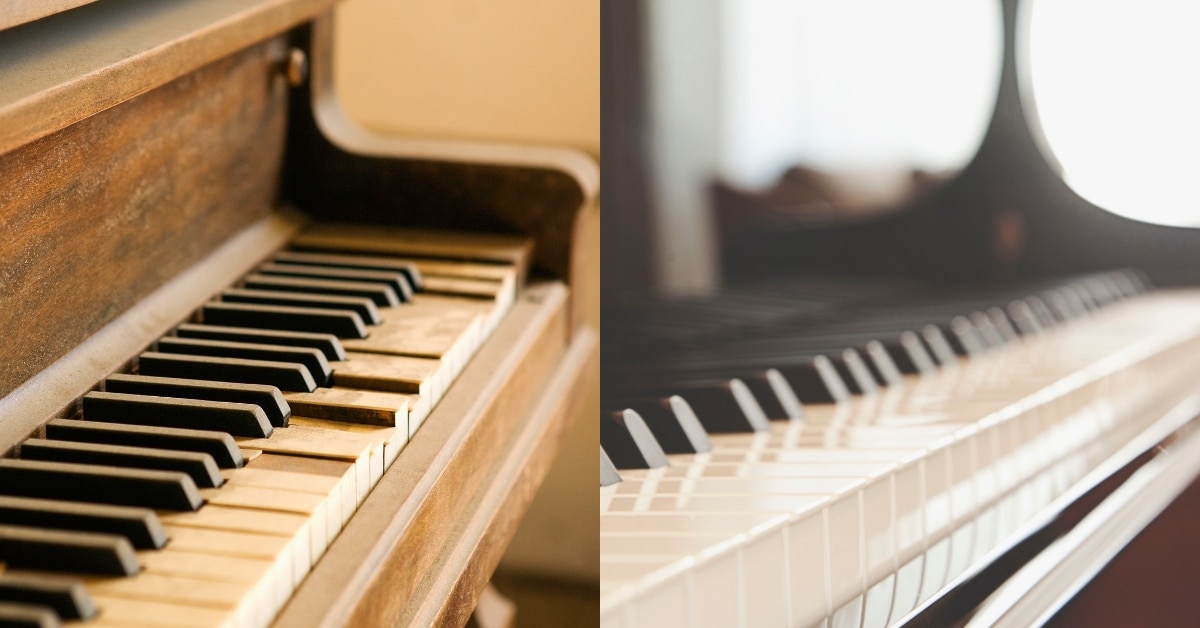
Since the middle of a keyboard is used more, heavy usage will wear the middle of the action more, outer keys showing less wear. So the greater the difference in feel or even appearance, the greater the wear.
A worn piano loses expressive and dynamic capability, feeling “looser.” If left unserviced, this does happen naturally over time as a piano’s action shifts, warps and ultimately becomes less regulated. That said, natural aging and playing wear can be distinguished by how consistent the keyboard feels throughout its middle and outer ranges.
Yellowed & Inconsistent Keys
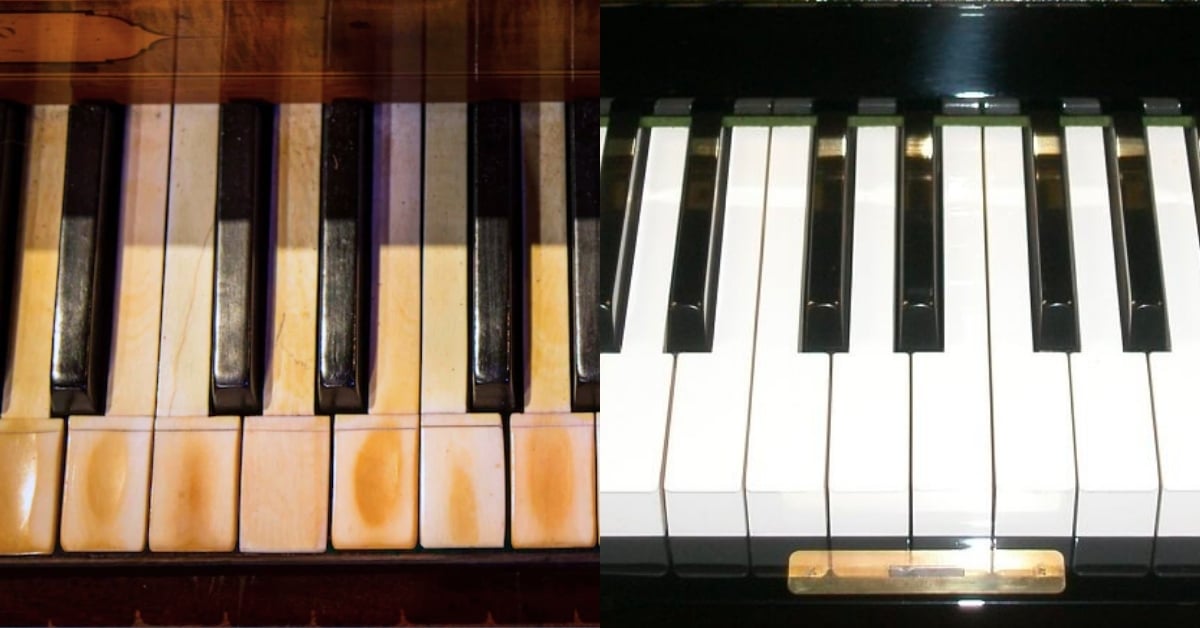
Inconsistent key spacing and wear patterns on the keys are good visual indicators that this piano has played quite a few song over the years. Notice this key wear is most prominent on the most commonly used octaves of the keyboard.
Visual cues can also be telling of wear — and not just the cabinet! Particularly in the middle sections of the keyboard, watch out for inconsistent gaps or key heights, yellowing and chips. These things indicate the piano has been played and played and played, without a technician giving it any necessary regulation work.
Indented Hammer Felts
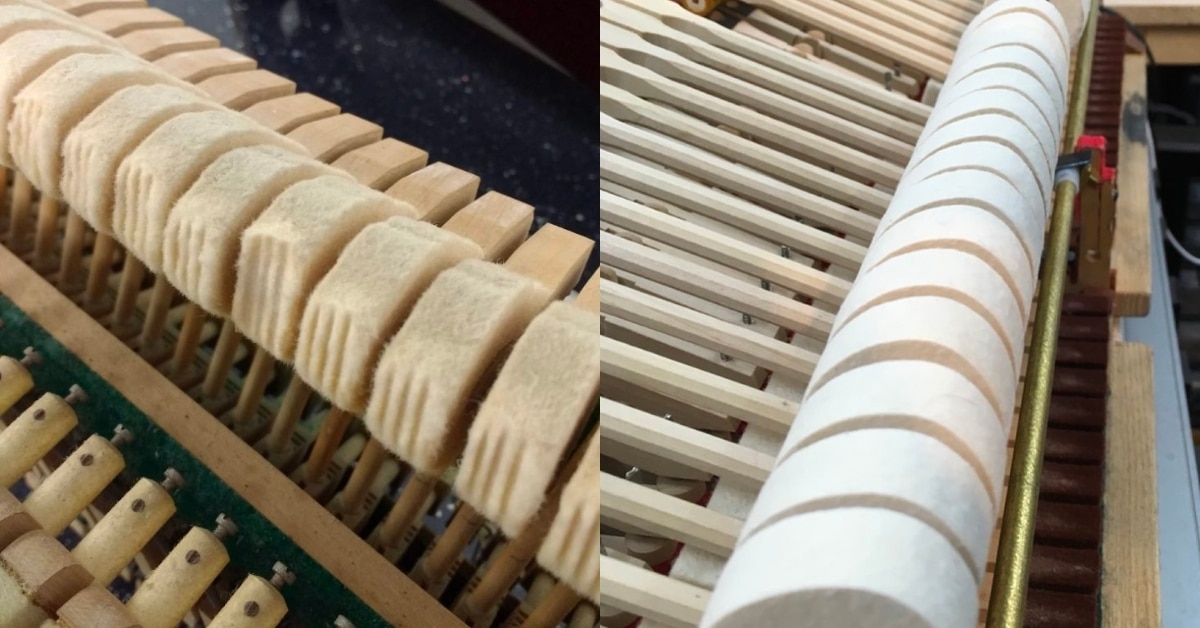
These hammers have definitely seen a lot of use as indicated by the “teeth” indents from hitting the strings along with the flattened shape of the hammer heads.
Hammer felts are also highly revealing. Hammer felts harden over time and develop “teeth” indents as a result of being smashed against the piano’s strings over and over. You can also listen for worn-out hammers which often give a piano a harsh, brassy, or muddled tone.
Inspecting hammer felts is most indicative of recent usage, as hammer felts should be—but often aren’t—softened and reshaped several times throughout a piano’s life to maintain a full-bodied tone.
How Pianos Age
Pianos tend to live very long “musically useful” lifespans, typically offering 75 to 125 years of quality life when bought brand new.
Of course, there are many variables involved in how long a piano can last such as:
- Quality of construction
- Quality of materials
- Brand and model
- Amount of playing it receives
- Level of maintenance received throughout its life
- Physical placement
- How many times it’s been moved
- And etc!
We mean to describe the typical aging process of a piano that has been properly stored and maintained throughout its life with typical home usage. That is, a new piano that has not been rebuilt (which entails significant parts replacement, greatly extending a piano’s lifespan).
“Useful musical life” refers to the time a piano can be considered good for practice and general playing. High-level performance quality is a much stricter standard that’ll wear out even high-quality pianos in more like 40-60 years.
New Piano: 0 – 10 Years Old
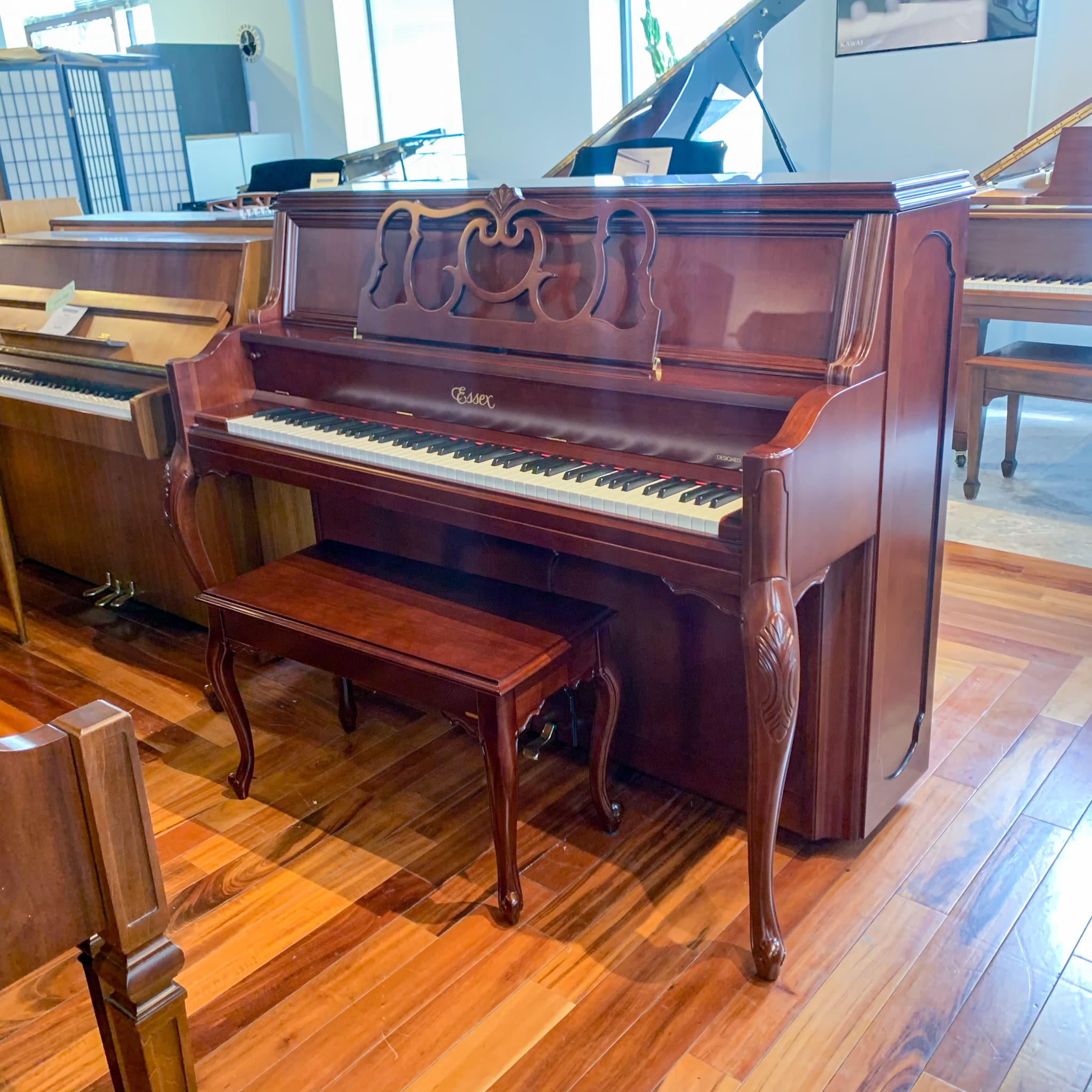
New pianos will change very little in their first ten years and will feel and sound brand new.
During this time, we do still recommend giving it attention as far as maintenance. In fact, tuning it more than the standard 1-2x a year will improve its longevity and playability later in life — technicians will be able to tell you did this!
Young Piano: 10 – 20 Years Old

Depending on instrument quality and amount of usage received, these pianos may still feel and play like brand new or very slightly “broken in”.
Broken-In Piano: 20 – 40 Years Old

Higher quality instruments seeing moderate use (less than 2 hours a day) will feel lightly “broken in” around this age. Not worn by any means, but less concisely ‘tight’ as new pianos but still highly expressive.
Many pianists do prefer the feel of pianos around this age as the crisp resistance of the brand new piano begins to feel nicely broken in and quite comfortable to play.
Aging Piano – 40 – 60 Years Old
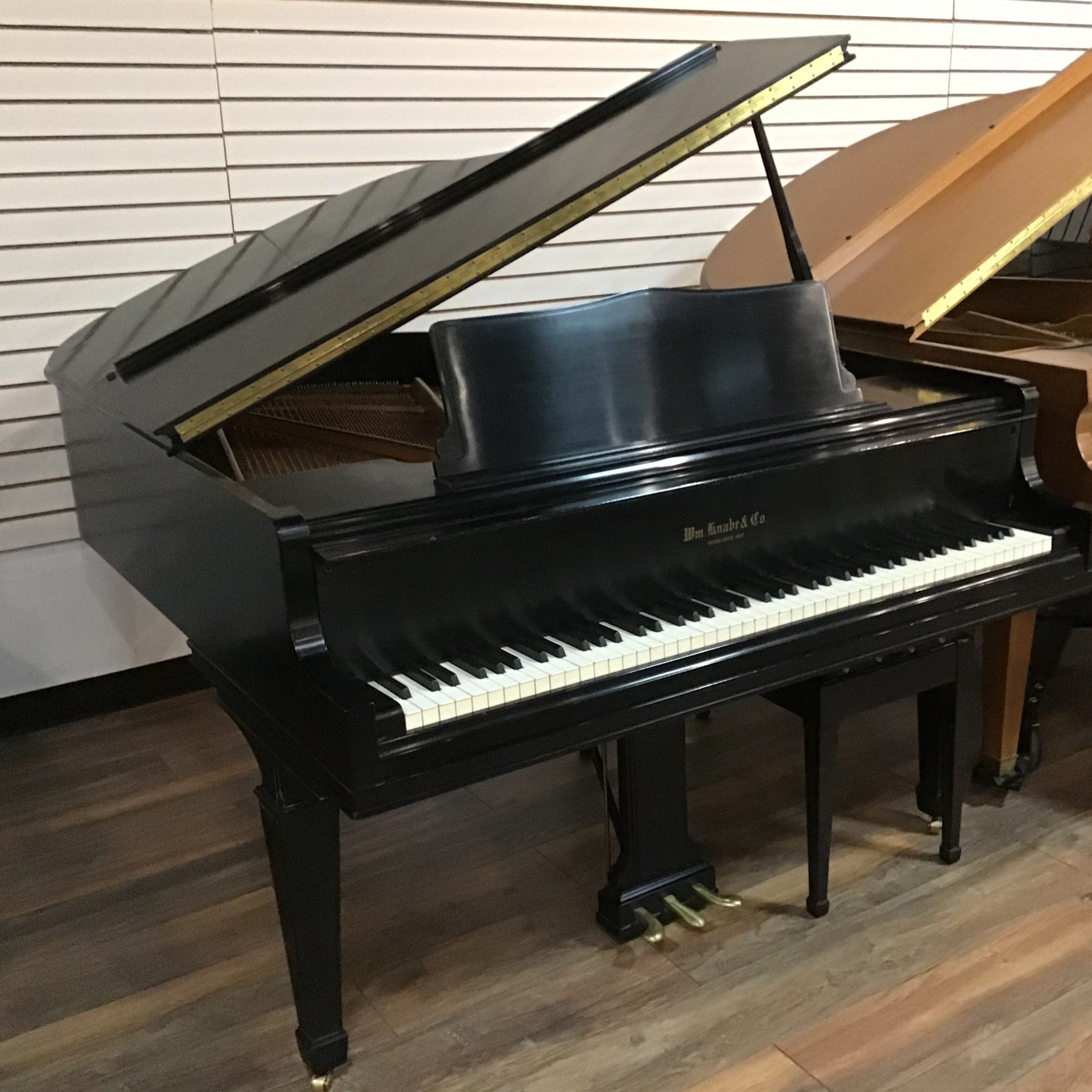
The amount of usage piano has experienced begins to make a major difference around this time.
Heavily-used or lower-quality pianos start feeling comfortably worn with somewhat decreased expressive ability. Lightly-used higher quality instruments will feel “properly broken in” and more like 20-40 years old around this age.
String oxidation will begin to take effect around this age too, slowly brightening and thinning the sound quality, though not yet to a significant degree. If you’d like the piano to keep sounding like new, replacing the strings or hammers may be recommended around this age.
Old Piano: 60 – 80 Years Old
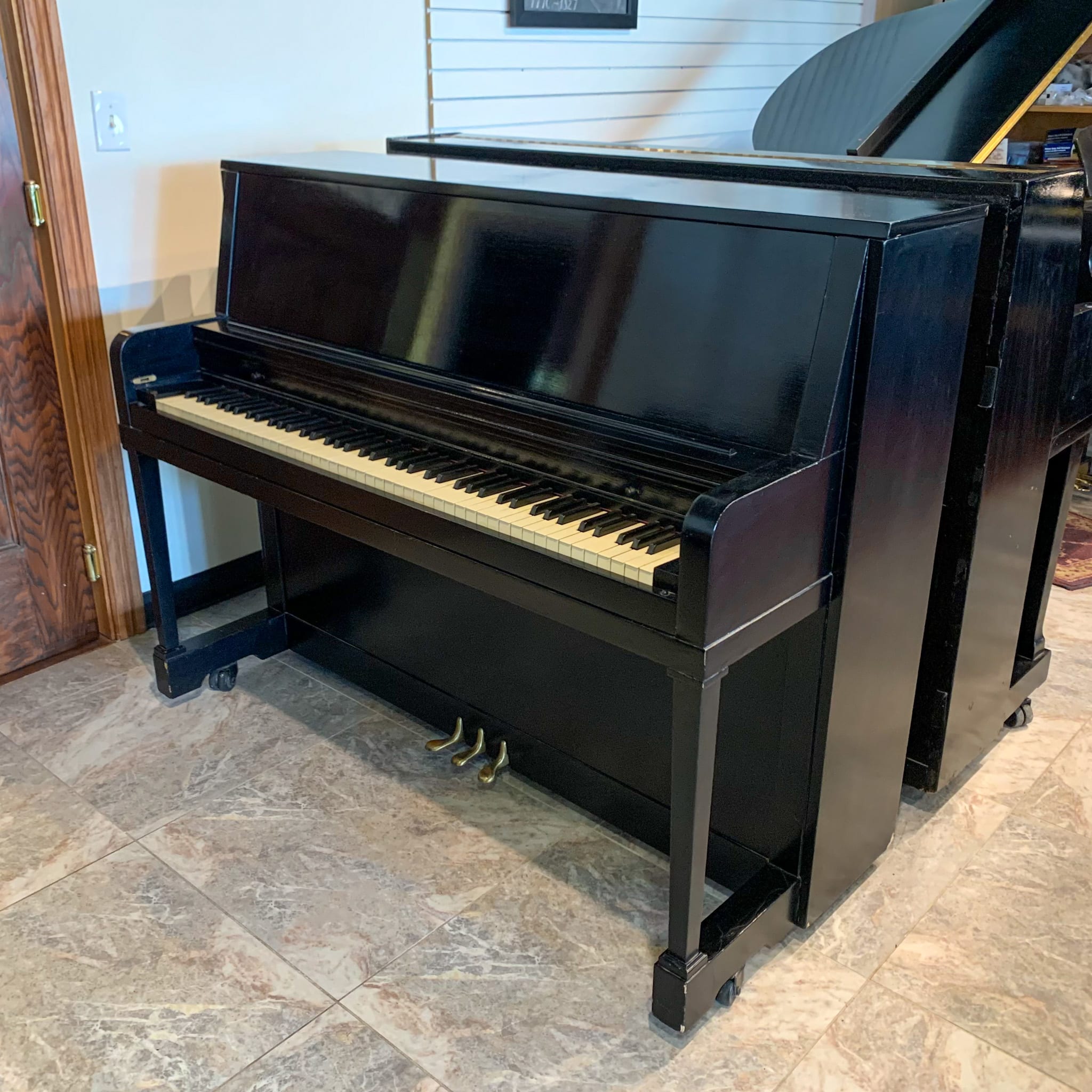
Lower quality unrefurbished pianos will feel the effects of wear as the keys “loosen up” and finer musical details and expressions become more difficult to achieve.
If strings have not been replaced, the cumulative string oxidation around this age will definitely be noticeable, typically resulting in thinner, brighter sound qualities.
Higher-quality instruments around this age that have received proper maintenance and moderate usage may play more like 40-60-year-old pianos though.
Vintage Piano: 100 – 125+ Years Old
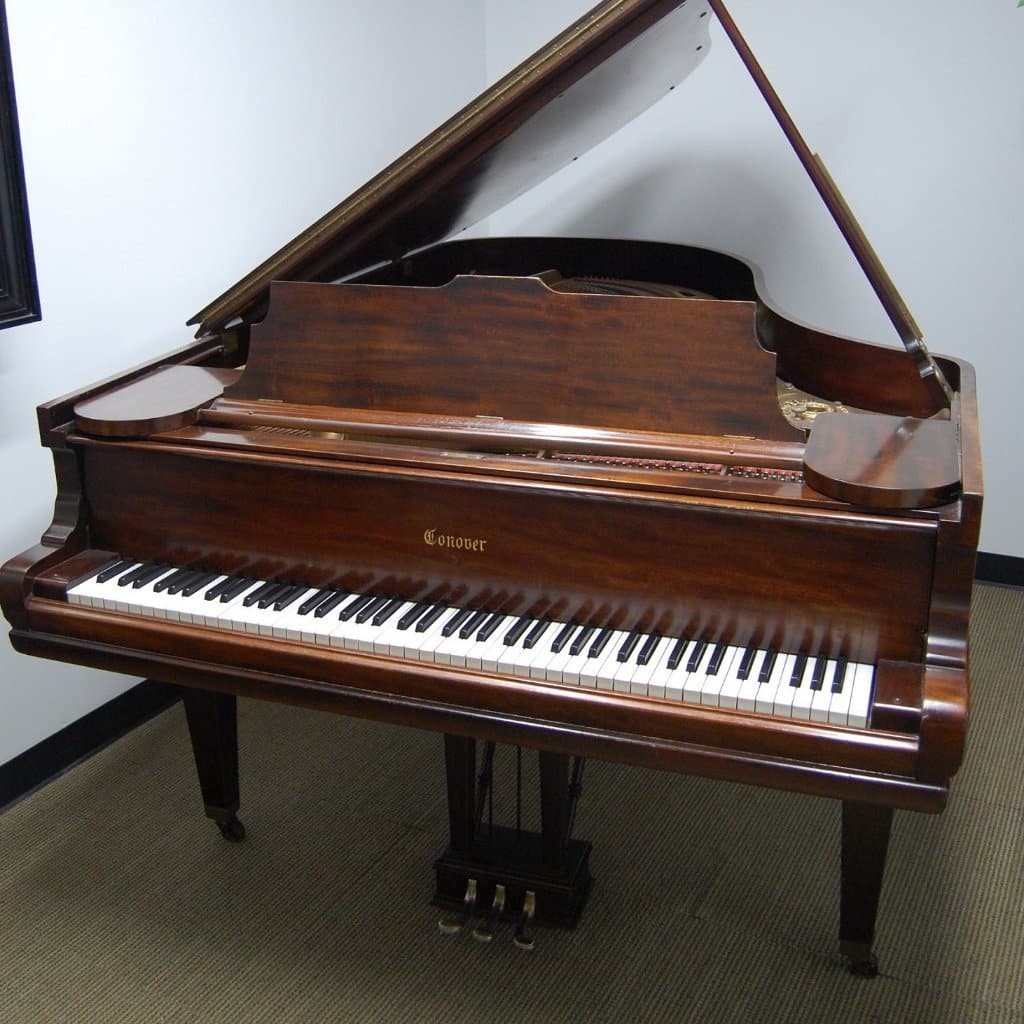
Even higher-quality antique or vintage pianos that have been well maintained (with only essential parts replaced as needed) will be approaching the end of their quality musical life around this age.
They may still be appropriate for beginners to intermediate players for a while longer though!
Well-restored or rebuilt pianos can have many more decades of quality playing left ahead of them at this point too.
Piano Disposal: When is it Time?
The “end” of a piano’s life typically comes once it has incurred enough natural decomposition along with wear and tear that it is no longer practical to use as an instrument without prohibitively expensive repairs.
Similar to a car, at a certain point, it just makes much more sense to purchase a newer piano than to continue on with pricey and often time-consuming major repairs.
Common indicators that your piano is ready to be disposed of include:
- No longer being able to hold its tune.
- Major damage to the soundboard, iron plate, pinblock or other major parts.
- Noticeable wear throughout most of the action.
How Long Do Pianos Last? A Long Time
If you take care of it, a piano can last 80-100 years. As mentioned, that refers to its “useful musical life.”
The oldest pianos in the world still standing are 300+ years old: three original pianos built by Cristofori, the oldest of which is on display at the Metropolitan Museum in New York City. They’re amazing parts of history, but they’re more like glorified harpsichords when compared to the pianos we know today. No way they could handle a Liszt or Rachmaninoff concerto!
Nearly all piano problems are ultimately repairable if you’re willing to spend the money on a full rebuilding. Typically though, this isn’t really a practical option unless it’s a unique piano or has strong sentimental value.
So we instead recommend prolonging your piano’s life by taking regular care of it. Doing this, you’ll give it the best chance of reaching its 80th birthday — and maaannny mooooore!
Make sure to check out Kawai Australia’s tips on increasing your piano’s lifespan!

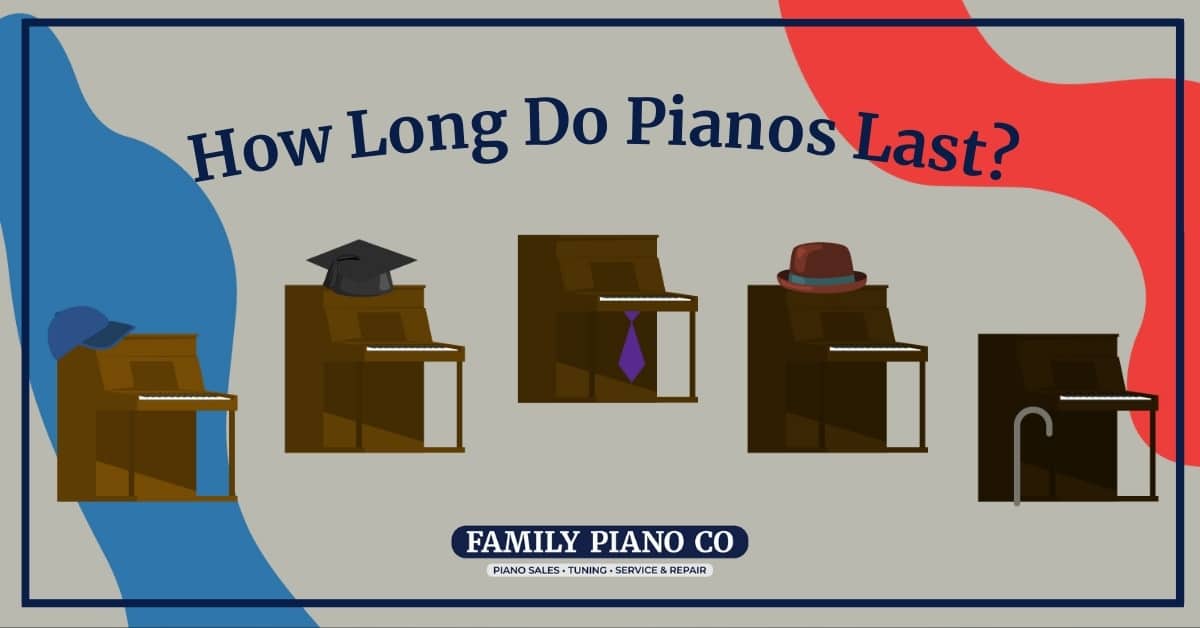





0 Comments